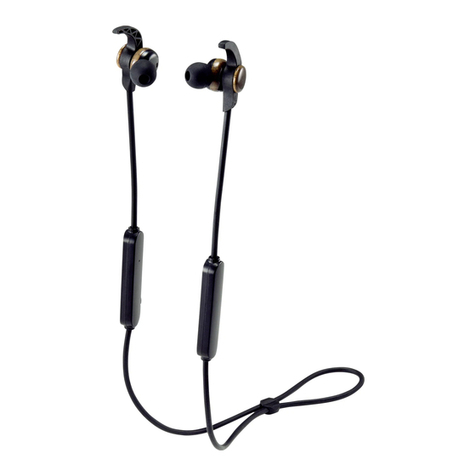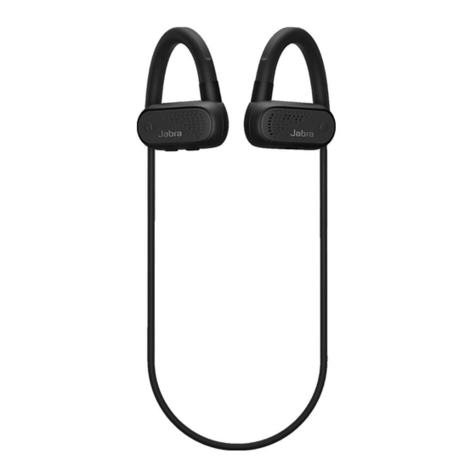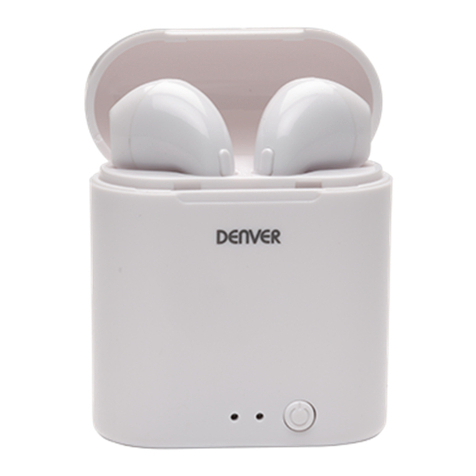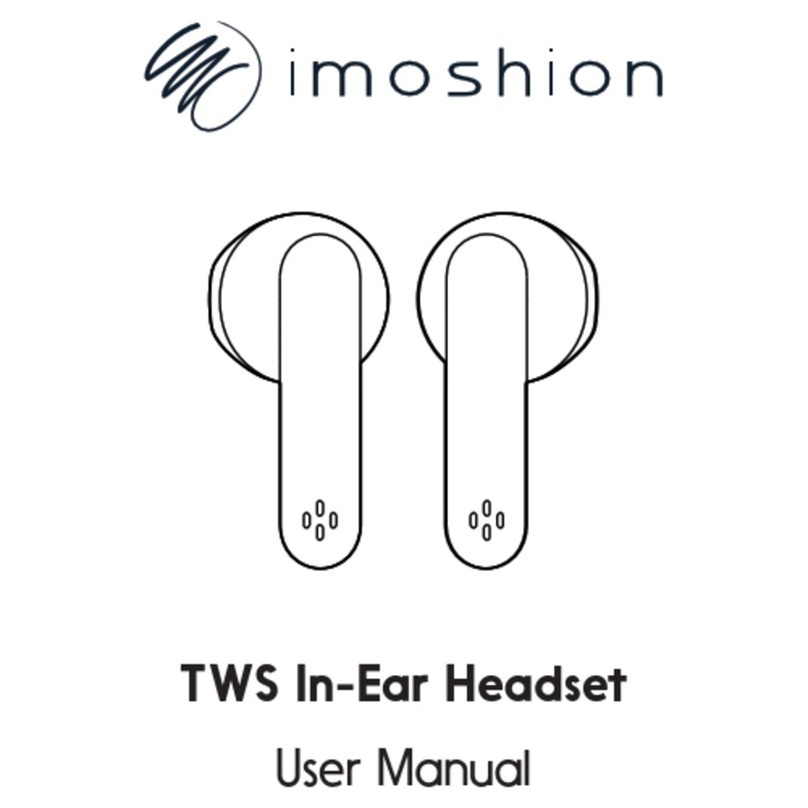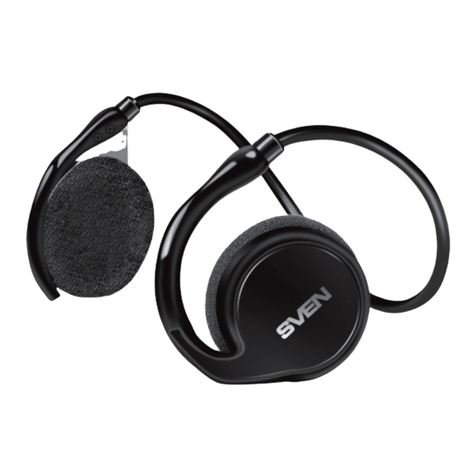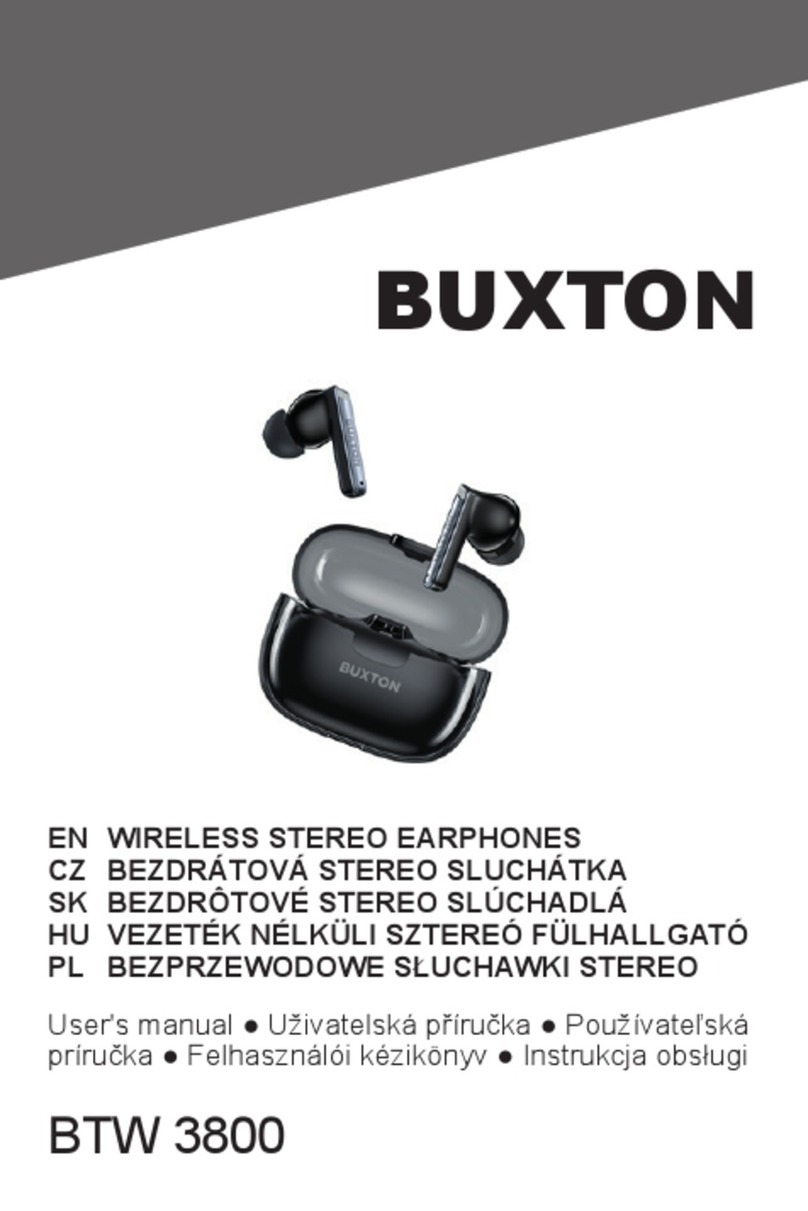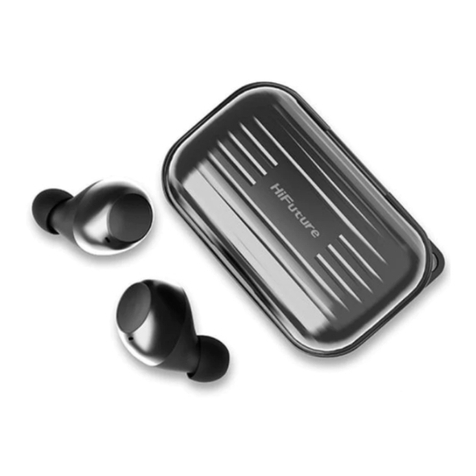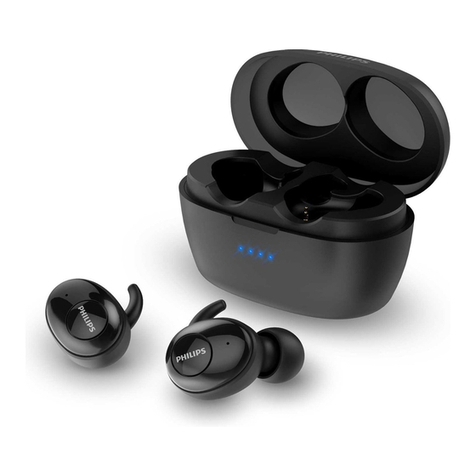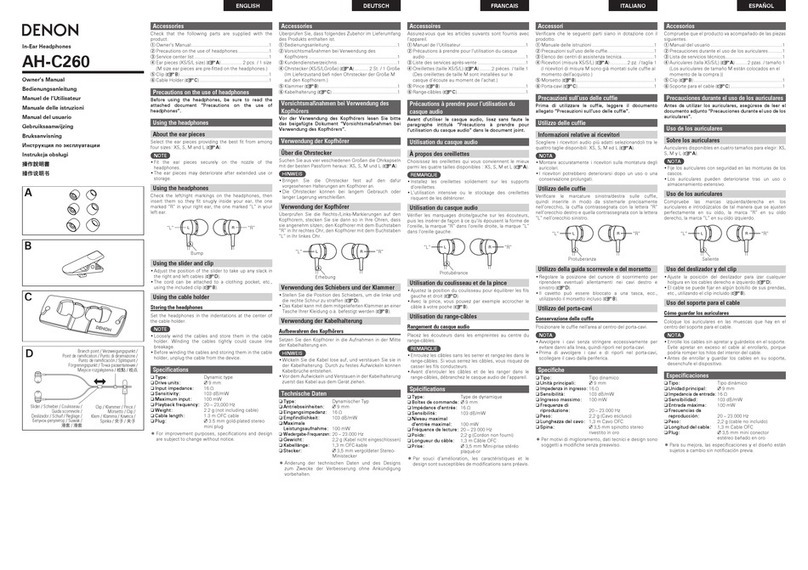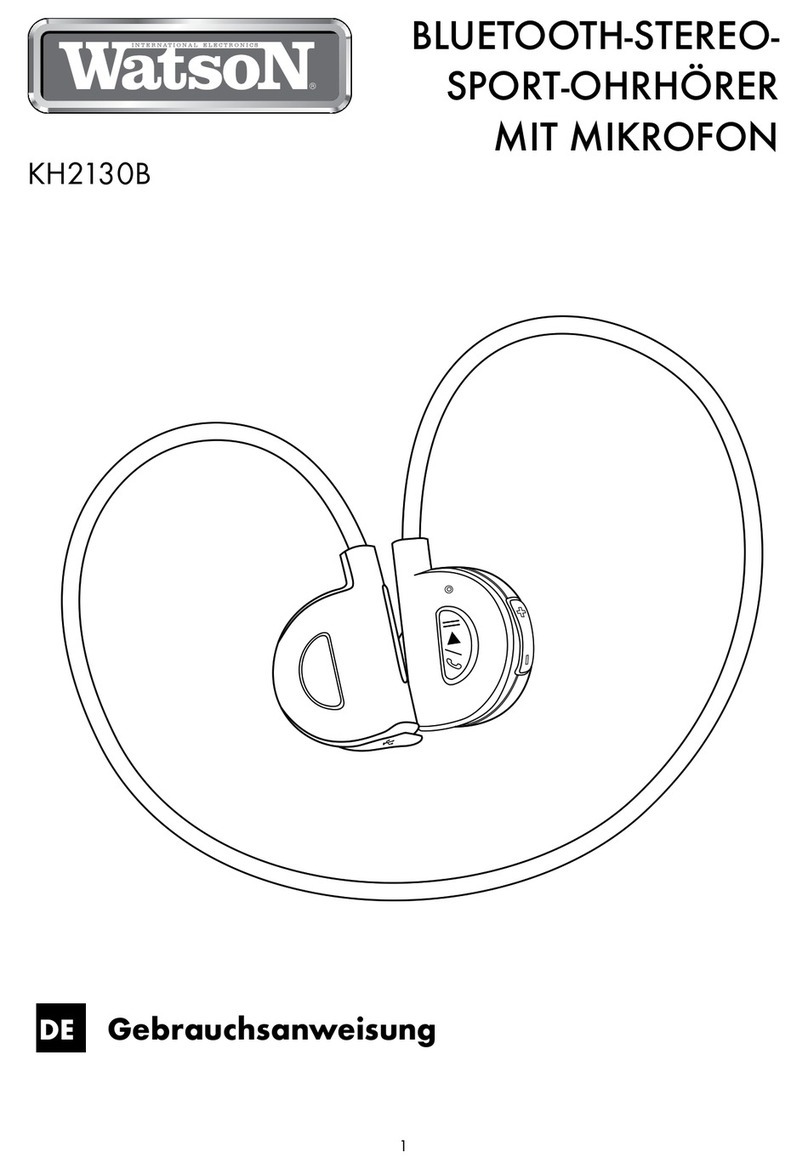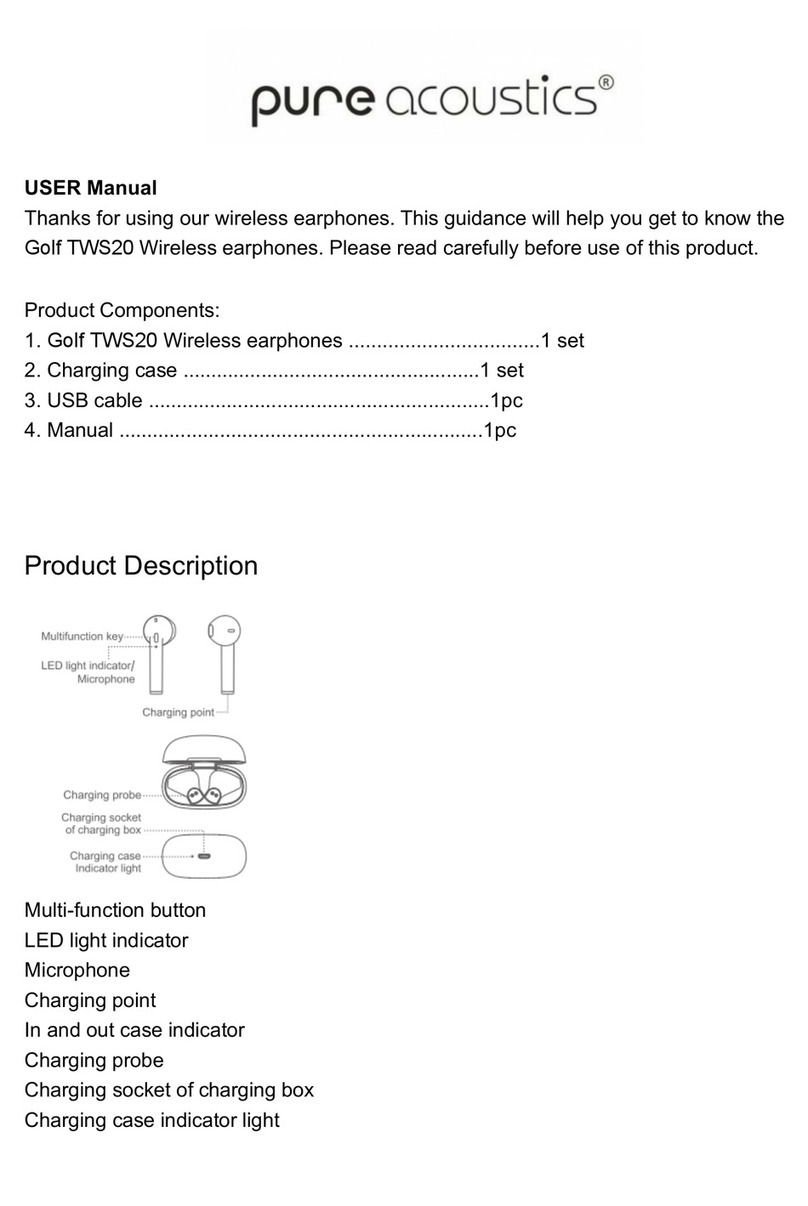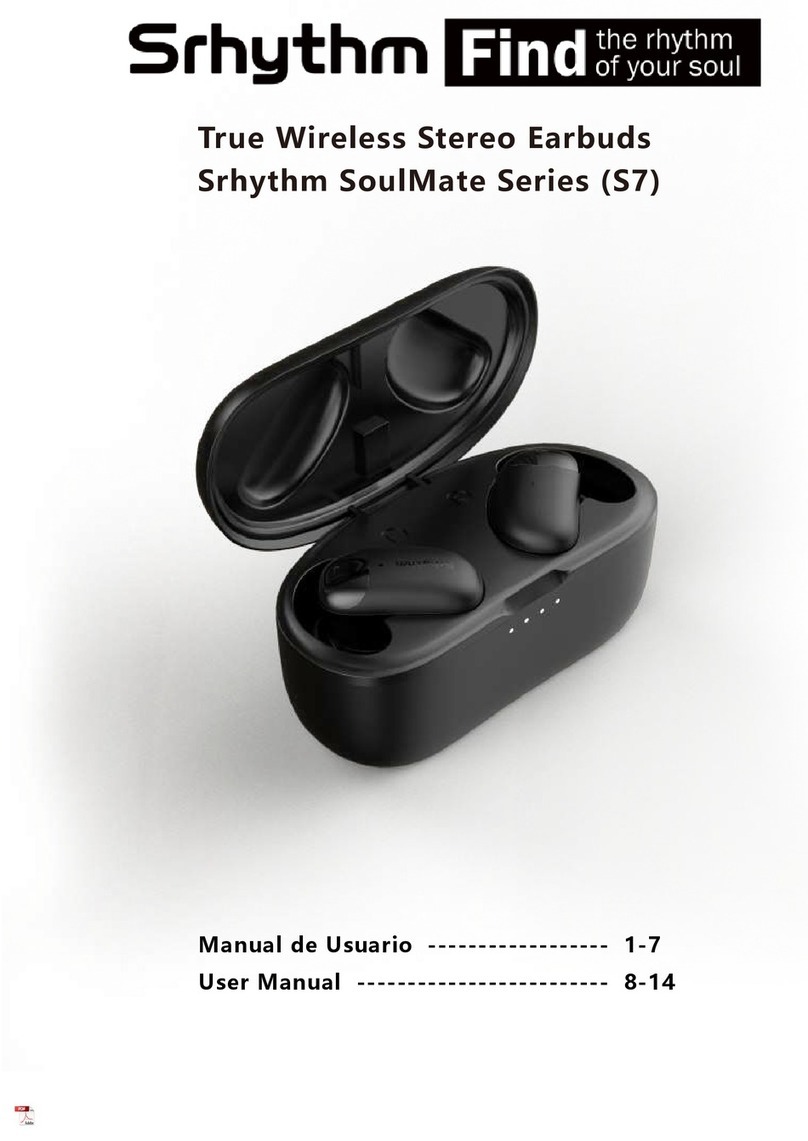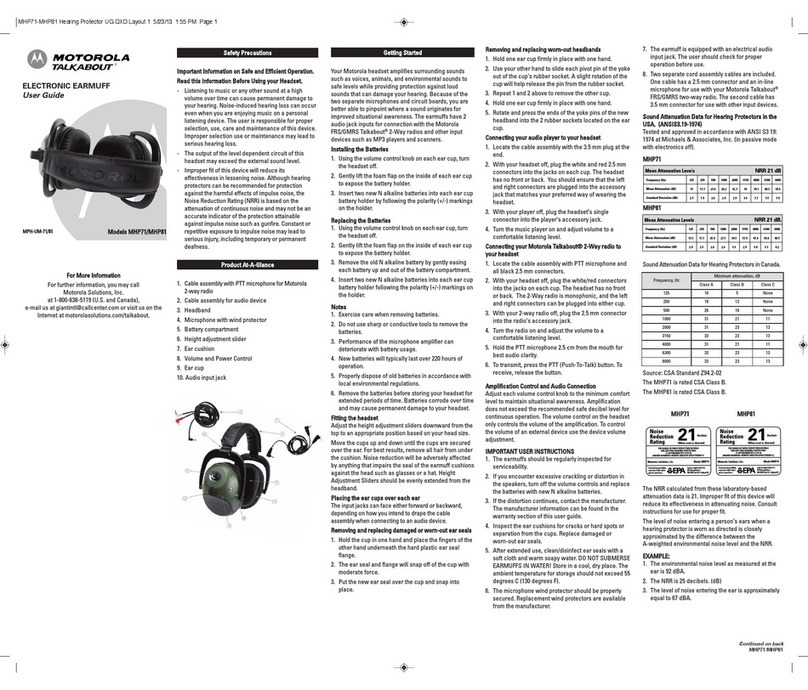T.BONE HD 2000 NC User manual

Thomann GmbH • Hans-Thomann-Straße 1 • 96138 Burgebrach • www.thomann.de • [email protected] DocID: 432276_17.05.2021
HD 2000 NC
Quick Start Guide
This quick start guide contains important information on the safe operation of the
product. Read and follow the safety advice and instructions given. Retain the quick
start guide for future reference. If you pass the product on to others please include
this quick start guide.
EN
Features
• Active noise cancellation
• Wireless connection to mobile phone or the like via Bluetooth®
• Audio le playback and making phone calls via Bluetooth®
• Over-ear
• Adjusting via variable headband
• Built-in rechargeable lithium-ion battery
• Charging via supplied micro USB cable
• Supported proles: HSP V1.6, HFP V1.5, A2DP V1.0, AVRCP V1.4
Operating elements
1. Turning active noise cancellation on and o
2. Increase volume / skip to next track
3. Turning the device on and o / accepting and ending calls / redialling /
starting and pausing playback
4. Decrease volume / skip to previous track
5. Microphone
6. 3.5mm mini jack input
7. Control LED
8. Micro USB socket
Safety instructions
Intended use
This device is used to convert acoustic signals into electrical signals as well as their
wireless transmission. Any other use or use under other operating conditions is con-
sidered to be improper and may result in personal injury or property damage. No
liability will be assumed for damages resulting from improper use.
Danger for children
Ensure that plastic bags, packaging, etc. are disposed of properly and are
not within reach of babies and young children. Choking hazard! Ensure
that children do not detach any small parts from the product. They could
swallow the pieces and choke! Never let children unattended use electri-
cal devices.
Danger to life by distraction
Using earphones or headphones may divert your attention from the en-
vironment. Ambient noise may not be audible. Do not use the device in
road trac or when operating machinery.
Possible hearing damage
With headset connected, the device can produce volume levels that may
cause temporary or permanent hearing impairment. Do not operate the
device permanently at a high volume level. Decrease the volume level
immediately if you experience ringing in your ears or hearing impair-
ment.
Notes on wireless transmission
This device utilizes frequencies that are not harmonized within the European Union
(EU) and therefore may only be used in certain EU member states. In all European
countries, the frequencies used for the transmission of audio signals are strictly regu-
lated. Before you start, make sure the frequencies are allowed in the respective coun-
try and check whether the operation must be reported to the appropriate authority.
For more information, please visit: http://www.thomann.de.
• Make sure that transmitter and receiver are both tuned to the same channel.
• Never set multiple transmitters to the same channel.
• Make sure that there are no metal objects between the transmitter and receiver.
• Avoid interference from other radio or in-ear systems.
Incorrect handling of lithium batteries can result in injury
• In the event of a short circuit, overheating or mechanical damage, lithium batteries
can cause severe injuries.
• When handled correctly and appropriately lithium batteries pose no risk.
• Store lithium batteries in a cool, dry place, ideally in the original packaging.
• Store lithium batteries away from heat sources (e.g. radiators or sunlight). Lithium
batteries are hermetically sealed. Never attempt to open a lithium battery.
• If the battery housing is damaged small amounts of the electrolyte may leak out. If
this should happen, seal the lithium battery in airtight packaging and wipe up the
traces of electrolyte using absorbent paper towels. You must wear protective rub-
ber gloves when doing so. Clean your hands and the aected surface thoroughly
with cold water.
• Never attempt to recharge non-rechargeable lithium batteries. When charging lit-
hium batteries you must use a suitable charging device intended for the purpose.
• Before disposing of the device remove the lithium batteries. Protect used lithium
batteries against potential short circuits, e.g. by covering the poles with adhesive
tape.
• Only use powder extinguishers or other suitable extinguishing agents to extingu-
ish a burning lithium battery.
Possible damage to lithium-ion batteries through incorrect storage
By deep discharge, lithium-ion batteries can be permanently damaged or lose
some of their capacity.
Before long breaks, charge the batteries to around 50 % of their capacity and then
switch o the device. Store the device at room temperature or cooler in an environ-
ment as dry as possible. If the batteries are stored for a longer period, recharge
them to 50 % every three months.
Fully charge the batteries only shortly before use at room temperature.
Electromagnetic compatibility with other electrical equipment
Using the device near radios or TV sets may cause interference. Then increase the
distance between the devices.
Where to use the product
Never use the product
• in direct sunlight
• in conditions of extreme temperature or humidity
• in extremely dusty or dirty areas
• at locations where the unit can become wet
• near magnetic elds
General handling
• To prevent damage, never use force when operating the switches and controls.
• Never immerse the appliance in water. Just wipe it with a clean dry cloth. Do not
use liquid cleaners such as benzene, thinners or ammable cleaning agents.
Keep foreign substances from the unit!
Keep the device away from containers with liquids. Should any liquid get into the
unit, this could lead to its destruction or re. Be sure not to let any metal objects
into the unit.

Thomann GmbH • Hans-Thomann-Straße 1 • 96138 Burgebrach • www.thomann.de • [email protected] DocID: 432276_17.05.2021
HD 2000 NC
Using the device
1. To charge the built-in battery, connect the micro USB port (8) to a powered-on
computer or another USB charging source using the supplied USB cable. During
charging, the LED lights red. After the end of the max. 3-hour charging process,
the LED turns o.
2. For tethered data transfer, connect the player to socket (6) on the device using
the supplied mini jack cable. Using this socket disables the wireless transmission.
3. For the initial wireless connection to a player via Bluetooth® (A2DP prole), the
two devices must rst be paired as follows:
• Turn on the headset with button (3). Press and hold button (3) for three sec-
onds to activate the Bluetooth® function. The LED ashes blue.
• Turn on the player and activate the Bluetooth®function there. If the device was
previously paired with another device, this device must now be turned o or out
of range.
• Have the player search for Bluetooth® devices and select ‘HD2000NC’ from the
device list for connection.
• After successful connection, the LED lights up constantly blue. A later recon-
nection of the two devices will be established automatically.
Technical specications
Sensitivity driver 97dB±3dB
Sensitivity microphone –42dB
Driver diameter 40mm
Input impedance 32Ω
Frequency response driver 20Hz-20kHz
Noise cancellation up to 20-25dB @ 100-1000Hz
Power supply via USB port, 5V 300mA
Bluetooth® Frequency of operation 2.400 GHz ... 2.4835 GHz
Max. transmission power 10 mW
Standard Version 5.0
Transmission range 10 m
4. Put on the headphones and adjust the variable headband so
that the two ear cups sit directly over your ears.
5. If the device is connected to a mobile phone, you can make calls
as usual. To call the last number again, press the (3) key twice
in rapid succession. You can accept an incoming call by briey
pressing the (3) key. Hold the button (3) for about 1.5 seconds to reject the call.
You can end a call by briey pressing the button (3).
6. On wireless connection, you can start or pause playback of an audio le selected
on the player using the button (3). Briey press one of the / buttons
(2) / (4) to decrease or increase the volume. Keep these buttons pressed to skip
to the previous or next le.
7. The active noise cancelling function can be turned on or o, regardless of the
transmission mode, by holding down the (1) key. When activated, the LED lights
green.
8. If the battery voltage drops below 3.3V, two warning tones sound every 60
seconds. If the battery voltage drops below 3.1V, a warning tone sounds. If it
drops below 3V, the device switches o automatically and must be charged.
EN
Battery Type Lithium ions battery
Voltage 3.7V
Capacity 300mAh
Operating time 6 h
Standby time 200 h
Charging time 3 h
Weight 180 g
Ambient conditions Temperature range 0 °C ... 40 °C
Relative humidity 20 % ... 80 %
(non-condensing)
For the transport and protective packaging, environmentally friendly materials
have been chosen that can be supplied to normal recycling. Ensure that plastic
bags, packaging, etc. are properly disposed of. Do not just dispose of these ma-
terials with your normal household waste, but make sure that they are collected
for recycling. Please follow the notes and markings on the packaging.
Batteries must not be thrown away or incinerated; they must be disposed of in
accordance with local regulations for the disposal of hazardous waste. Use the
existing collection points for this.
Dispose lithium batteries only in discharged condition. Remove replaceable
lithium batteries from the device before disposal. Protect used lithium batter-
ies from short circuits, for example by covering the poles with adhesive tape.
Permanently installed lithium batteries must be disposed of together with the
device. Please inquire about a suitable acceptance point.
This product is subject to the European Waste Electrical and Electronic Equip-
ment Directive (WEEE) in its currently valid version. Do not dispose of your old
device with your normal household waste. Dispose of this product through an
approved waste disposal rm or through your local waste facility. Comply with
the rules and regulations that apply in your country. If in doubt, consult your
local waste disposal facility.

